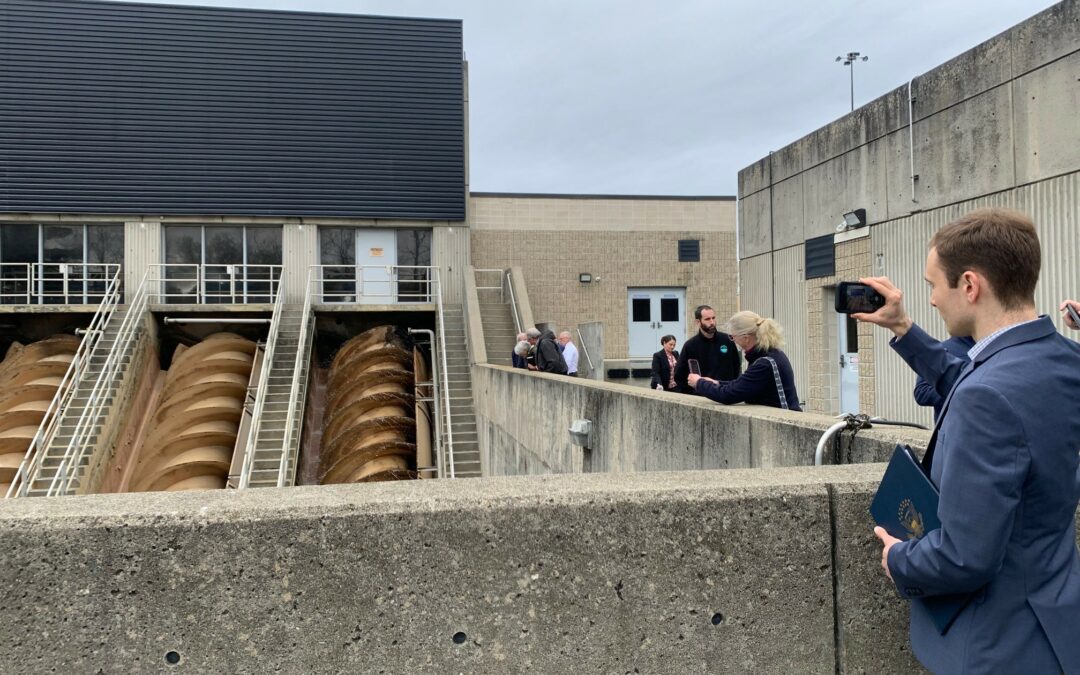LAWRENCE & LOWELL — Making the Merrimack a cleaner and healthier river for future generations to enjoy is a primary goal of Merrimack River Watershed Council, and recently we took part in two events that demonstrated our work and commitment toward that goal.
MRWC has been working with scientists at the federal Environmental Protection Agency (EPA) for several years to bolster water quality monitoring on the Merrimack. On April 29 we met with our EPA colleagues at Riverfront State Park boat ramp in Lawrence to highlight that work, and to share some science lessons with Lawrence High School environmental science students. The EPA brought its mobile lab to the boat ramp, where students and EPA Regional Administrator David Cash collected samples. Students worked with EPA scientists to analyze the rivers water.
Since 2020, the EPA lab in Chelmsford has been carefully analyzing water samples collected by MRWC and our dedicated volunteers. The samples are collected monthly from 13 collection points — from Manchester NH to the river mouth at Salisbury Beach and Plum Island. The samples provide a detailed look at the state of the river’s health and vitality. The partnership has allowed MRWC to create a trained and dedicated corps of volunteer water samplers.
This year, MRWC and its volunteers are embarking on a new project — collecting and analyzing samples after Combined Sewer Overflow events occur. This is a vigorous and demanding project that we expect will provide extremely valuable insight into how CSOs impact the health of the river. The data we’ve collected is being publicly posted on a digital map of the river, giving the public a new and unprecedented way to find out how bacteria impacts the river — and whether it is safe to swim in after CSO events occur.
Here’s more information on this event.
Lowell Summit
On April 30, we joined with state Senators Bruce Tarr and Ed Kennedy, state Representatives Vanna Howard and Rodney Elliott, Lowell City Manager Tom Golden, regional non-profits and staff from the region’s federal elected delegation, to launch a joint effort to reduce CSOs and improve the health of the Merrimack River. The event was hosted by the Lowell Regional Wastewater Treatment Facility, which is the municipal sewage treatment plant that serves greater Lowell.
Lowell is one of the largest sources of CSO discharges in the Merrimack River basin, accounting for about 41 percent of the total volume discharged into the river annually (the largest discharge source is Manchester at 43%, followed by Lowell, then Greater Lawrence at 8 percent, Haverhill at 6 percent, and Nashua at 2 percent). Lowell is currently undertaking an expensive and complex plan to drastically reduce its CSO outflows. The plan is expected to cost over $300 million and will take at least a decade to complete.
Participants toured the Lowell plant, where we learned that the 45-year-old plant has reached its daily capacity, and we received a briefing on projects planned to reduce CSO volume. The group also discussed how it can work together to address Lowell’s needs.
The regional group intends to help Lowell to succeed in finding the funding and resources needed to reduce its CSO volume. In a bigger picture, the group will work with communities all along the Merrimack to help identify sources of pollution and work collectively to find solutions. The group’s structure and mission is being formalized in a bill currently being considered by the Massachusetts State Legislature.
Click here for more information about the Lowell meeting.



Recent Comments